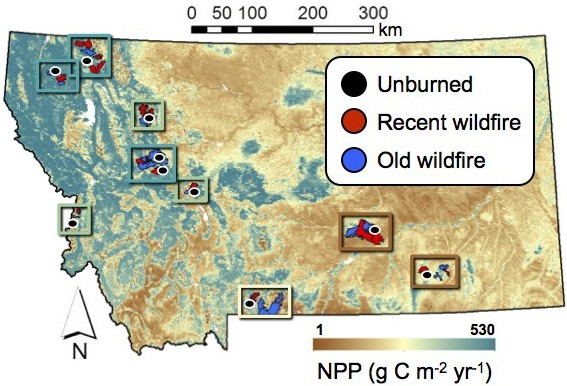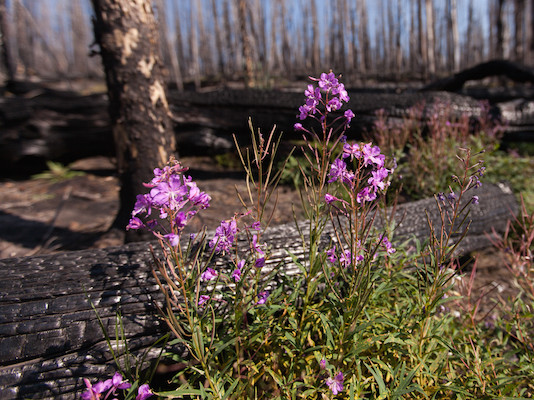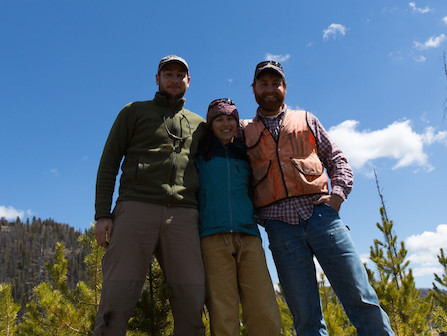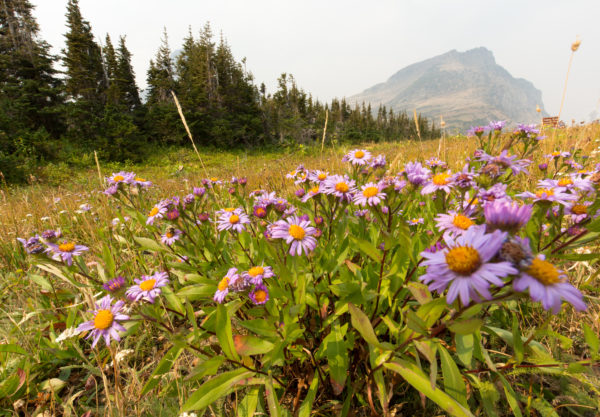Species Interactions in Changing Environments:
Plant-Pollinator Biodiversity and Community Assembly across Scales
Why does environmental change alter biodiversity and species interactions?

Plant-pollinator interaction in the
Northern Rocky Mountains, Montana
(Photo: Laura Burkle)
Related Publications
*Burkle, Laura A., Jonathan A. Myers & R. Travis Belote. 2016. The beta-diversity of species interactions: Untangling the drivers of geographic variation in plant-pollinator diversity and function across scales. American Journal of Botany 103: 118-28. Abstract PDF
*Invited Paper for Species Issue: Evolutionary Insights from Studies of Geographic Variation
Burkle, Laura A., Jonathan A. Myers & R. Travis Belote. 2015. Wildfire disturbance and productivity as drivers of plant species diversity across spatial scales. Ecosphere 6:art202 Abstract PDF
*Burkle, Laura A., Michael P. Simanonok, J. Simone Durney, Jonathan A. Myers & R. Travis Belote. 2019. Wildfires influence abundance, diversity, and intraspecific and interspecific trait variation of native bees and flowering plants across burned and unburned landscapes. Frontiers in Ecology and Evolution 7: 252. Abstract PDF
*Invited Paper for Species Issue: Arthropod Interactions and Responses to Disturbance in a Changing World
LaManna, Joseph A., R. Travis Belote, Laura A. Burkle, Christopher P. Catano & Jonathan A. Myers. 2017. Negative density dependence mediates biodiversity-productivity relationships across scales. Nature Ecology & Evolution 1: 1107-1115. Abstract PDF
Myers, Jonathan A., Jonathan M. Chase, Raelene M. Crandall & Iván Jiménez. 2015. Disturbance alters beta-diversity but not the relative importance of community assembly mechanisms. Journal of Ecology 103: 1291-1299. Abstract PDF Data Cover Article
*Myers, Jonathan A. & Joseph A. LaManna. 2016. The promise and pitfalls of beta-diversity in ecology and conservation. Journal of Vegetation Science 27: 1081-1083. Abstract PDF *Invited Commentary Paper
Catano, Christopher P., Timothy L. Dickson & Jonathan A. Myers. 2017. Dispersal and neutral sampling mediate contingent effects of disturbance on plant beta-diversity: A meta-analysis. Ecology Letters 20: 347-356. Abstract PDF Supporting Information Cover Article
Study Sites

Sites with contrasting wildfire histories replicated across a net-primary productivity (NPP) gradient in the Northern Rockies, Montana (Map credit: Travis Belote)

Fireweed (Chamerion angustifolium [Onagraceae]), Yellowstone National Park, Montana (Photo: J. Myers)

Disturbance, Productivity &
Plant-Pollinator Biodiversity Team,
Helena, Montana (May 2013)
This gallery (*coming soon*) includes images from:
- Helena, Montana
- Glacier National Park, Montana
- Whitefish, Montana
- Yellowstone National Park, Montana
Education, Outreach, and Training
Acknowledgements


